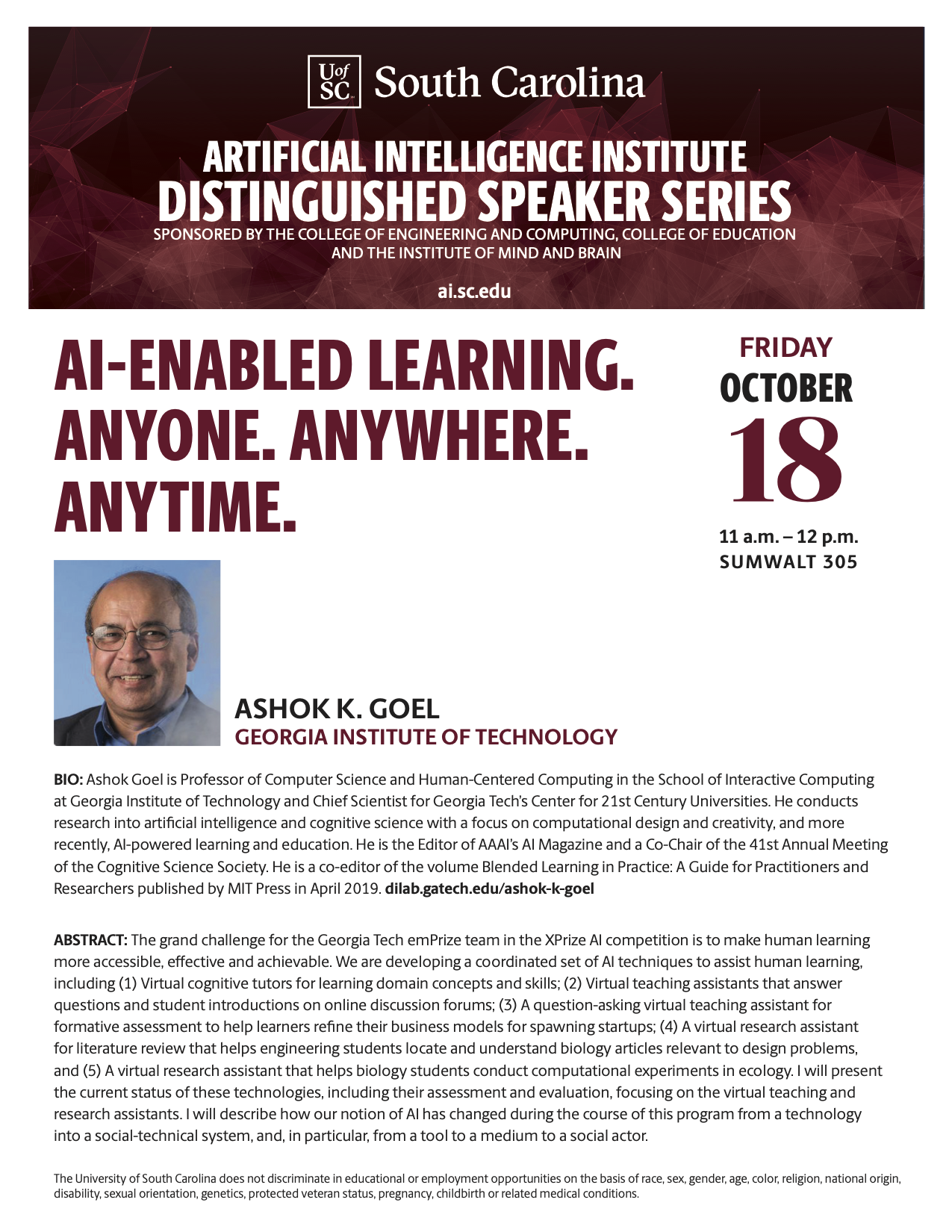Wednesday, October 23, 2019 - 11:00 am
Meeting Room 2277, Innovation Center
DISSERTATION DEFENSE
Department of Computer Science and Engineering
University of South Carolina
Author : Mohammad Ali Javidian
Advisor : Dr. Marco Valtorta
Date : Oct 23, 2019
Time : 11 am
Place : Meeting Room 2277, Innovation Center
Abstract
Probabilistic graphical models (PGMs) use graphs, either undirected, directed, or mixed, to represent possible dependencies among the variables of a multivariate probability distribution. PGMs, such as Bayesian networks and Markov networks, are now widely accepted as a powerful and mature framework for reasoning and decision making under uncertainty in knowledge-based systems. With the increase of their popularity, the range of graphical models being investigated and used has also expanded. Several types of graphs with different conditional independence interpretations - also known as Markov properties - have been proposed and used in graphical models.
The graphical structure of a Bayesian network has the form of a directed acyclic graph (DAG), which has the advantage of supporting an interpretation of the graph in terms of cause-effect relationships. However, a limitation is that only asymmetric relationships such as cause and effect relationships can be modeled between variables in a DAG. Chain graphs, which admit both directed and undirected edges, can be used to overcome this limitation. Today there exist three main different interpretations of chain graphs in the literature. These are the
Lauritzen-Wermuth-Frydenberg, the Andersson-Madigan-Perlman, and the multivariate regression interpretations. In this thesis, we study these interpretations based on their separation criteria and the intuition behind their edges. Since structure learning is a critical component in constructing an intelligent system based on a chain graph model, we propose new feasible and efficient structure learning algorithms to learn chain graphs from data under the faithfulness assumption.
The proliferation of different PGMs that allow factorizations of different kinds leads us to consider a more general graphical structure in this thesis, namely directed acyclic hypergraphs. Directed acyclic hypergraphs are the graphical structure of a new probabilistic graphical model that we call \textit{Bayesian hypergraphs}. Since there are many more hypergraphs than DAGs, undirected graphs, chain graphs, and, indeed, other graph-based networks, Bayesian hypergraphs can model much finer factorizations and thus are more computationally efficient. Bayesian hypergraphs also allow a modeler to represent causal patterns of interaction such as Noisy-OR graphically (without additional annotations). We introduce global, local and pairwise Markov properties of Bayesian hypergraphs and prove under which conditions they are equivalent. We define a projection operator, called shadow, that maps Bayesian hypergraphs to chain graphs, and show that the Markov properties of a Bayesian hypergraph are equivalent to those of its corresponding chain graph. We extend the causal interpretation of LWF chain graphs to Bayesian hypergraphs and provide corresponding formulas and a graphical criterion for intervention.
The framework of graphical models, which provides algorithms for discovering and analyzing structure in complex distributions to describe them succinctly and extract unstructured information, allows them to be constructed and utilized effectively. Two of the most important applications of graphical models are causal inference and information extraction. To address these abilities of graphical models, we conduct a causal analysis, comparing the performance behavior of highly-configurable systems across environmental conditions (changing workload, hardware, and software versions), to explore when and how causal knowledge can be commonly exploited for performance analysis.
